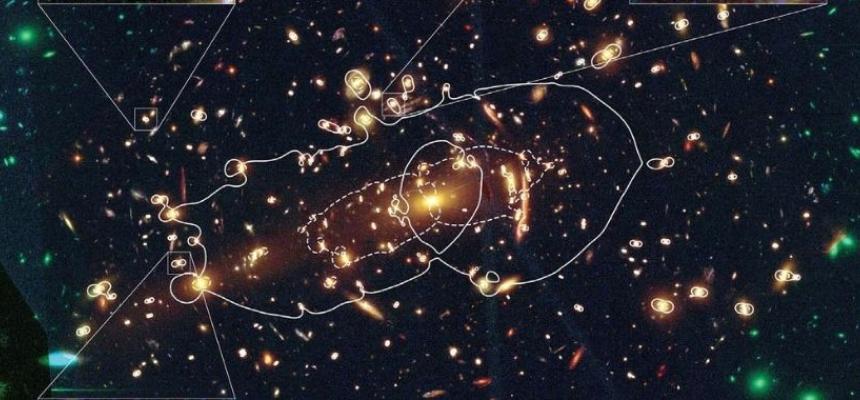The article "An excess of small-scale gravitational lenses observed in galaxy clusters" has been published in the prestigious journal Science, with the collaboration of Prof. Borgani of the Physics Department.
Nowadays, a number of observational evidences consistently support the Standard Model of Cosmology: about 70% of the content of the Universe is provided by an elusive form of Dark Energy, about 25% by Dark Matter whose nature is still unknown and only 5% by “normal” atoms. Despite the nature of these dark components is unknown at present, this cosmological model allows us to make detailed predictions on the physical properties of the cosmic structures that we observe. The most sophisticated tools to work out such predictions are represented by numerical simulations which make optimal use of high-performance computing infrastructures.
In this context, clusters of galaxies are the most massive cosmic structures in the Universe: with a mass of about a million of billions of masses of the sun and a dimension of several millions of light years, clusters of galaxies also acts as powerful gravitational lenses, which deform the images of far away galaxies, much like optical lenses distort the image of background objects.
In this article, to be soon published in the journal “Science” a team of Italian astronomers, in collaboration with colleagues from US and The Netherlands, presents a detailed study of the gravitational lensing properties of clusters of galaxies observed with the NASA’s Hubble Space Telescope and with the Very Large Telescope of the European Southern Observatory (ESO), located in Chile. The comparison between these observations and numerical simulations carried out in a collaboration between Stefano Borgani (Department of Physics, University of Trieste) and Elena Rasia (INAF-Astronomical Observatory of Trieste) provided a quite unexpected result: the standard cosmological model predicts a structure of clusters of galaxies that is much less “granular” than showed by observations. This result could suggest that simulations of cosmic structures still lack some fundamental ingredient. The other, possibly more attractive, implication is that our understanding on the nature of dark matter and dark energy is incomplete, if not wrong.
Stefano Borgani commented: “The level of details on the structure of galaxy clusters obtainable from the most advanced telescopes now available is really impressive. This quality of observational data needs to be paralleled by a comparable quality of the model predictions obtainable from advanced numerical simulations. This is mandatory for us to be confident that about the profound implications of our results on the current understanding of the Universe and of the fundamental laws that determine its evolution.
An excess of small-scale gravitational lenses observed in galaxy clusters
11 September, 2020





